by Whit Blanton, Forward Pinellas Executive Director
Under gorgeous skies, I spent a large part of a recent weekday on a field trip to my high school hometown of Sarasota, which has been carrying out ambitious transportation projects in and around its downtown over the last few years. I explored the new series of US 41 roundabouts and the transformation of 4-lane Ringling Blvd into a 2-lane street with protected bike lanes, all changes meant to promote safety and accessibility. It was an opportunity to experience first-hand the outcomes of some transportation changes we’re planning in Pinellas County.
I was also interested in seeing these transformations in part because I had a hand in planning them in the early and mid-2000s as a transportation consultant working for the and the Sarasota/Manatee Metropolitan Planning Organization. For several years, I had a corporate apartment/office on US 41 at 14th Street while serving both Sarasota and Manatee County clients. From the early 1980s until 2015, I spent a lot of time driving through and living nearby these roadways. I was curious if the outcomes were consistent with the planning objectives.
“I am proud of the City of Sarasota, Government and the Florida Department of Transportation on bold thinking and innovative actions to achieve some important goals in creating a balanced transportation network for all users of the system.”
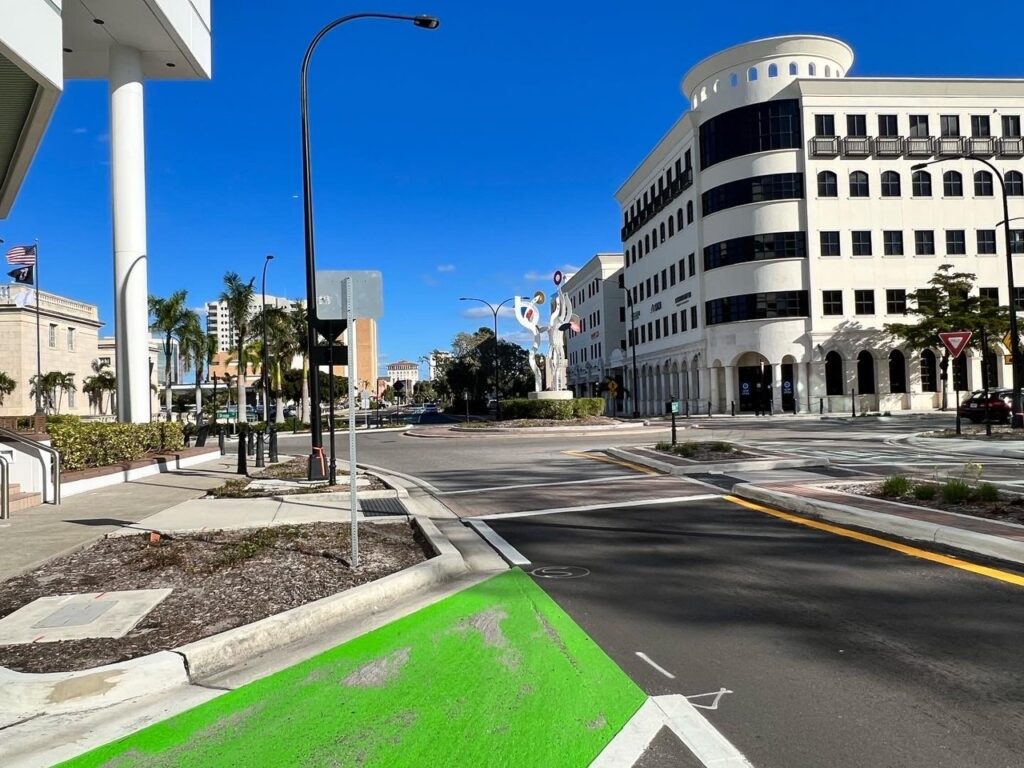
The roundabouts through downtown Sarasota aim to slow down traffic speeds and reduce crashes on US 41, which separates downtown from the magnificent Bayfront, while the changes to Ringling Blvd. provide safe passage for bicyclists across downtown to the US 41 corridor. Lessons can be learned from other cities about how transportation challenges can be handled. This was a big step for the City, in partnership with FDOT District 1. It took a lot of planning, cooperation, and communication to make it happen.
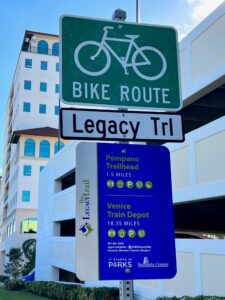
The Ringling bike lanes connect the Legacy Trail to downtown and the Sarasota Bayfront, where a multi-use regional trail connects to St. Armands Circle and Lido and Longboat Keys. I loved the wide protected bike lanes on Ringling Blvd., and the Legacy Trail is beautiful. They work well with the street grid and low-speed traffic circles in downtown. Traffic on a mid-afternoon Friday was no issue. I saw a mom, her elementary school age daughter, and their dog riding in the bike lanes across 301/41! That’s the target market for quality bicycle infrastructure that makes people comfortable.
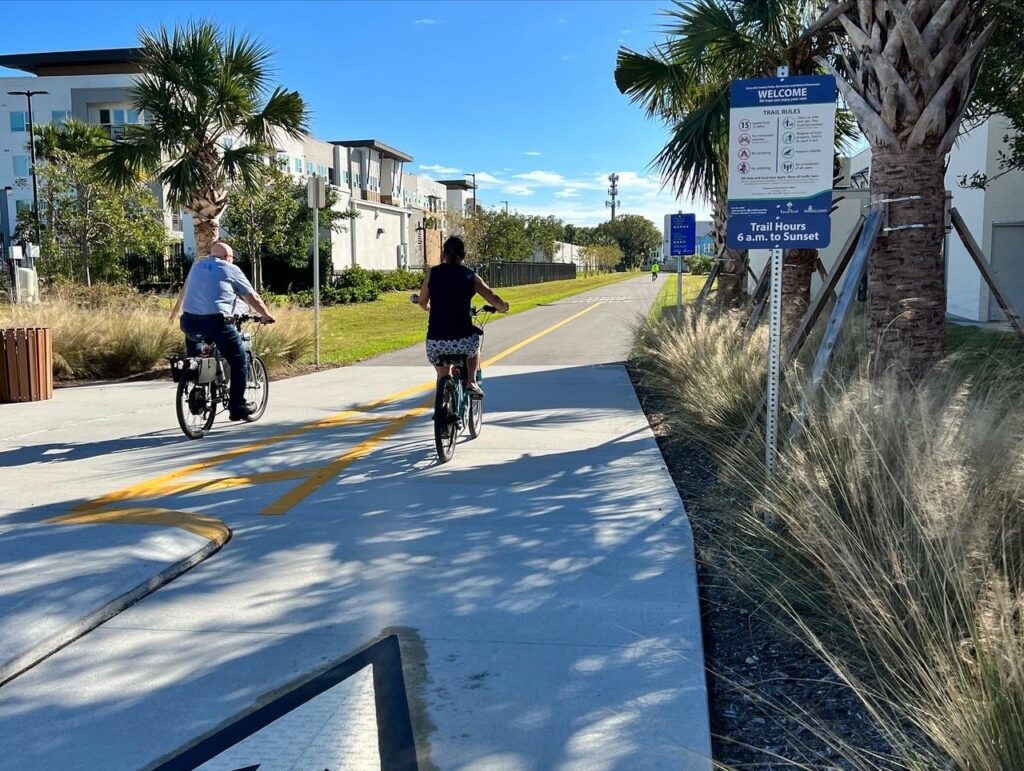
The series of roundabouts on US 41, a major corridor that serves Gulf Coast beach traffic and commuters, are located at 14th St., 10th St., Fruitville Rd., and Gulfstream Blvd., the latter of which carries traffic between downtown and the popular St. Armands Circle and Lido Beach destinations. The multi-use regional trail parallels these roundabouts, with signalized crossings at each roundabout, using pedestrian hybrid beacons. The smaller intersections at 10th, 14th and even Fruitville worked spectacularly. Gulfstream is not quite finished, but it is operating until the final pavement markings are installed.
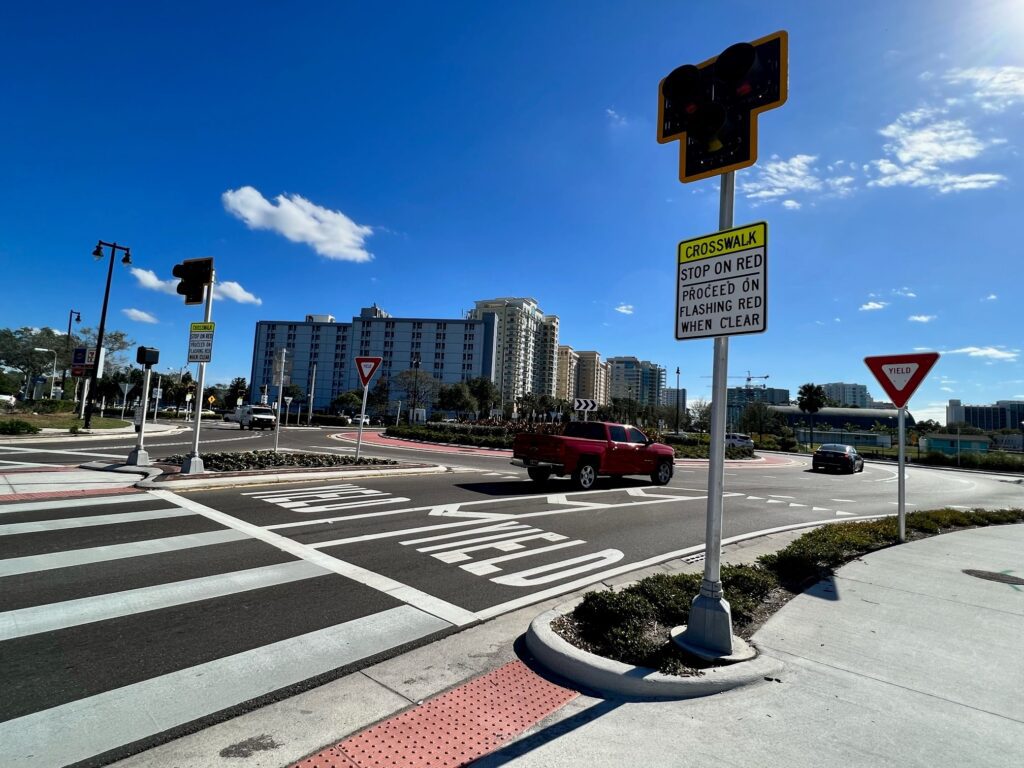
I remember the long delays getting through these intersections in decades past. There were still congestion delays, especially southbound at Fruitville and Gulfstream, but cars kept moving and it is arguably flowing better than with the traffic signals that were replaced. I felt mostly comfortable on my bike navigating them, but I hated the two-stage crossings of these roundabouts on the trail. The Pedestrian Hybrid Beacon (PHB) signals build in delay for people on foot or bike, which seem unnecessary when combined with the low speeds of cars entering and exiting the roundabouts. Pressing the button in the median on low volume side-street seems unnecessary. I understand the 30,000 daily traffic volume on US 41 is why PHBs are in place versus Rectangular Rapid Flashing Beacons (RRFBs), and it makes sense when crossing US 41. But RRFBs on the lower volume and lower speed cross streets at the roundabouts would better serve bicyclists using the trail.
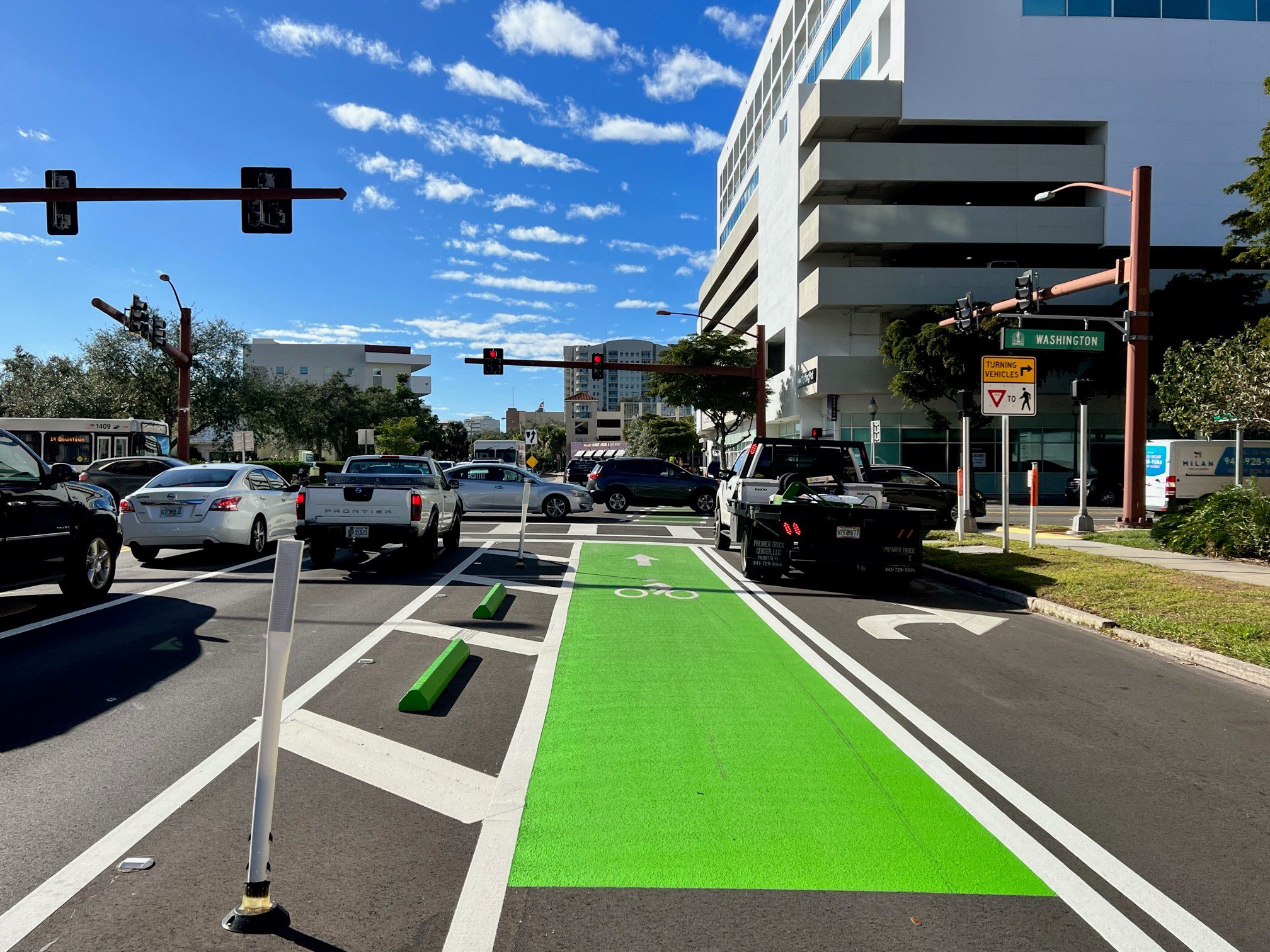
There will be a learning curve for local traffic to navigate these changes, but I am confident people will learn these new patterns and will navigate them safely. I am proud of the City of Sarasota, Government and the Florida Department of Transportation on bold thinking and innovative actions to achieve some important goals in creating a balanced transportation network for all users of the system.
Lessons learned and observations that can be transferred to work in Pinellas County and elsewhere!








